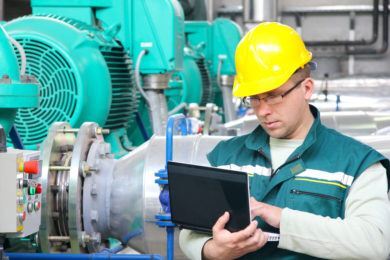
In some systems, a bottleneck may simply be a point that prevents manufacturing capacity from being increased, which usually does not affect production unless there is a reason for that process to be scaled up. If there is a need to scale production, it may be necessary to redesign the component that is causing the bottleneck prior to increasing throughput.
Nonetheless, in most manufacturing scenarios, bottlenecks can result in material accumulation and additional downtime between processes.
Effects of Production Bottlenecks
When there is a bottleneck in your machine, all other parts of that process slow down to accommodate it and materials accumulate along the production line – causing unnecessary downtime at work and in some cases a loss of revenue or profits. To avoid material accumulation and process downtime it’s important to be familiar with where current bottlenecks exist in production.
Moreover, if you’re considering increasing your production capacity, you should first analyze your existing process to look for bottleneck process improvement and debottlenecking,-opportunities. If you know where bottlenecks will occur before scaling, you may be able to adjust the existing process rather than investing in a new system.
How to Spot a Bottleneck
In many cases, it’s possible to notice a bottleneck simply through experience and daily monitoring. If you do not work directly with the process, you may be able to easily spot where bottlenecks occur in a machine by discussing this with the process operators or walking through the process. In some simpler cases, bottlenecks occur where there are not enough human or mechanized resources working in one area of the production line.
In cases where there are no obvious bottlenecks that can be seen visually, you can look at throughput on a unit-by-unit basis. Many processes track percent utilization of each unit, and units that are close to full utilization may already be incurring bottlenecks – or will become bottlenecked if the supply is increased.
If utilization is not tracked for each unit, you can see where bottlenecks are possible by calculating throughput at each step of your production process. This can be done by finding the minimum time it takes for one material unit (as defined by the process) to go through each processing step and dividing the total time your process runs (you can estimate by using a 1 hour or 8-hour span) by the minimal unit production time. If your throughput numbers are coming close to or are higher than your approximate unit per hour measurement, then you may have a bottleneck or a potential bottleneck should you plan to increase production.
How to Eliminate Bottlenecks
By definition, to debottleneck your process, you must increase the production capacity of the unit where the bottleneck occurs. This means that more material must have the ability to move through the production line. In some cases, such as with reactors and transport systems, this may involve increasing the volume of the unit; or for pumps or compressors, this may involve purchasing a higher power unit.
However, it may also be possible to debottleneck your process with design improvements. For example, in die casting processes, it is possible to automate scrap handling with GK conveyors. Instead of standard belt conveyors, GK’s vibratory units are able to meter material and directly re-feed the furnace without operators. This eliminates manual forklift removal and improves safety within the plant. For primary screens in recycling facilities, it is possible to improve separation and increase throughput with GK’s FINGER-SCREEN™ 2.0. The previous bottleneck of material on the tipping floor is eliminated.
If you’re ready to upgrade your manufacturing process and avoid further (or potential) bottlenecking, now’s the time to contact General Kinematics. We have expert engineers ready to analyze your process and offer custom-fit solutions for your toughest challenge.







